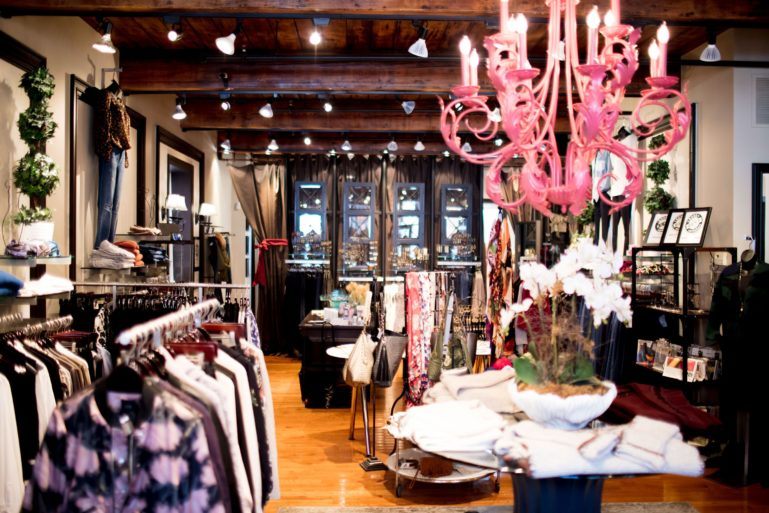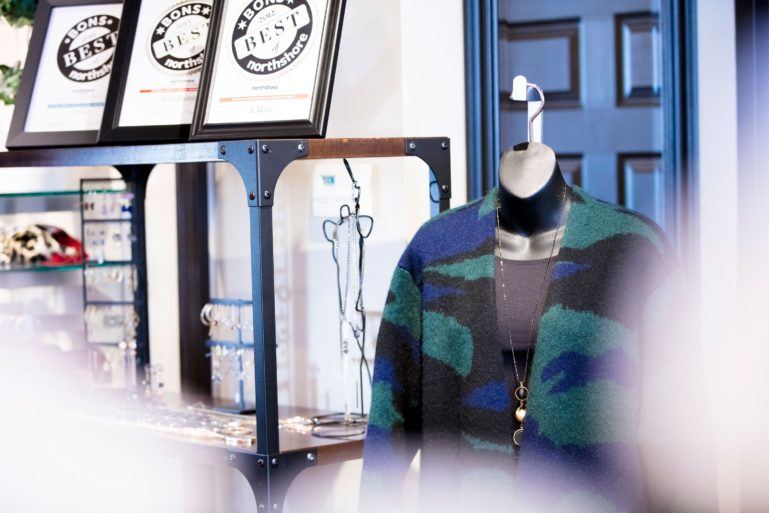
Winning at Loss Prevention (Your Retail Shrink Action Plan)
Retail shrink, retail shrinkage, inventory shrinkage, or whatever you want to call it, the bottom line is the same – product is walking out the door and you’re losing money.
The annual National Retail Security survey found that inventory shrink averaged 1.44 percent of retail sales in 2016; resulting in a $48.9 billion loss.
Although this amount is staggering and suggests retail crime is a serious problem for businesses of all sizes, there’s a silver lining to the dark cloud of retail theft. In the 20+ years that the University of Florida in partnership with the National Retail Federation (NRF) surveyed participants, it was the lowest recorded shrink percentage in its history.
That means, collectively, retailers like you are taking this matter seriously. You are actively taking steps to prevent retail shrinkage in your storefronts. Take a few seconds and give yourself and fellow shop owners a pat on the back for this success. Okay, the seconds are up, back to business.
Ideally, you want that number to be as close to zero as possible. While 1.38 is trending downward and that’s a positive sign, there’s still room for improvement.
Whether you need to create a retail shrink action plan from scratch or just need to fine-tune the one you have, let’s take a look at some loss prevention strategies that can make a significant impact on your bottom line.
Calculating Retail Shrinkage
Before you get started with a practical plan, let’s quickly discuss how you can calculate your store’s retail shrink rate.
Since you can’t sell what you don’t physically have, you’ll first want to take a physical inventory count and calculate the cost of those goods. For example, let’s say you physically have $75,000 worth of inventory sitting in your store. However, you take a look at your point of sale software or accounting software, and your books tell you there should be $100,000 worth of inventory.
To find your retail shrink rate, you need to take the book value ($100,000), subtract it from the physical inventory value ($75,000), equals $25,000 in shrinkage, or 1.33 percent.

What Causes Shrinkage In Retail?
Before you can remedy the problem, you first have to do a little detective work and find out what’s causing the loss. Why is your retail shrinking? Did you hire a few dishonest employees or are you an easy target for shoplifters? If you don’t know the root of the problem, you can’t take the appropriate steps to correct it.
Every week or at least once a month, gather data find out how much revenue you’re losing. Are the numbers fluctuating or trending down or up? Once you have reliable data to lean on, you can determine what factors are influencing inventory shrinkage.
According to the 2017 edition of that same survey, shoplifting and employee theft are the two most significant factors for retail shrink – collectively accounting for 66.5 percent. Here’s what that breakdown looks like:
- Shoplifting – 36.5 percent
- Internal employee theft – 30 percent
- Administrative and paperwork errors – 21.3 percent
- Vendor fraud or error – 5.4 percent
- Unknown loss – 6.8 percent
Some causes of retail shrink are accidental. For instance, if you own a lighting store and a customer fumbles a delicate lamp you have on display and accidentally breaks it. Unless the customer is uber-apologetic and insists on paying for it, you’re going to have to take the loss.
This is an example of retail shrinkage. However, the bigger picture is understanding the areas where shrinkage is occurring so that you can take the proper steps to prevent it from happening in the future. In this case, that retail shrink is a result of accidentally damaged goods – a.k.a. The cost of doing business. The simple solution would be to adopt a ‘no touch’ policy, communicate that to customers via signage, and be mindful of foot traffic and product placement.
Other causes of retail shrink that are intentional. These are calculated acts of theft by employees or shoplifting criminals and the two areas costing you the most money. But, there are also ways to can gain more control over these areas by taking actionable steps to help minimize your risk of shrinkage. Let’s dive into the good stuff.
How To Prevent Shrinkage In Retail
Like we mentioned before, retail shrinkage comes in many forms, but there are some best practices that every storefront can put in place. Let’s take a look at those tactics.
Invest in Inventory Management
To make sure your inventory doesn’t mysteriously escape, you need to have a way to track it. The best way to track inventory is using a point of sale (POS) system that provides inventory management capabilities like ShopKeep’s iPad POS system.
With a POS system, you set an item’s quantity on-hand value, and it automatically subtracts any products that are sold at the point of purchase. If you have 15 table lamps on-hand and a customer buys two, the POS will record that sale and deduct the two lamps from your inventory. Assuming you haven’t suffered any retail shrinkage, this would bring down your stock to 13 table lamps.
Point of sale systems also allows you to make inventory adjustments to account for incidentals like your customer accidentally breaking the lamp. So even if an item makes it through your doors in a garbage bag rather than a shopping bag, you still have a way to account for it.
SEE ALSO: Basic Inventory Management Techniques for Better Business
What makes a POS a complete system is the combination of POS software and hardware peripherals like a barcode scanner, cash drawer, and receipt printer. The hardware is neatly arranged at the checkout counter and facilitates the purchase process. Employees can quickly and accurately ring up items, while the software takes care of all the essential data points about the transaction.
From a single transaction, you can find information such as:
- Date and time of the transaction
- The register it occured on, if you have multiple registers
- The employee that processed the transaction
- If the payment was cash, credit, or debit and the card type of the latter two
- The customer who made the purchase
- The transaction type, sale or return
- If there was a discount applied and if so, the amount discounted
- Line item detail of the items purchased
- Sales tax information
If you can only take away one thing from this action plan, let it be this. A robust POS system that can provide you with insightful data and analytics about your business and help reduce administrative errors is a giant step towards reducing retail loss.
Take Time to Train Employees
Employees might be part of your retail theft problem, but they can also be part of the solution. By taking a firm stance against retail theft sends a clear message to your employees that there is zero tolerance for theft of any kind, internal or external, in your place of business.
Letting employees know how seriously you take retail theft and that all suspects will be prosecuted to the fullest extent of the law, can be an excellent deterrent for internal robbery in itself. However, it’s only part of the solution.
Employees are on the front lines when it comes to going up against shoplifters, so you also need to train them on how to recognize these swindlers. Since thieves typically don’t wear a sign around their neck letting store owners know they’re coming in to loot the store, spotting one can be a little tricky.
Make sure employees know how to spot shifty behavior such as spending long periods of time in the same aisle, carrying large handbags, or wearing baggy sweatshirts on a seasonably warm day. If they can pick up on nervous or irregular behavior, there’s a good chance someone can intervene and prevent the would-be crime.
Employee training is also an excellent way to connect with employees and interact with them outside of standard business procedures.This can help managers and employees bind and gain a level of respect for one another that will hopefully keep them honest.

Put Security Cameras in Place
These days cameras are everywhere. They’re on ATMs, gas pumps, and the self-checkout kiosks in grocery stores. There are probably more images of you in the throes of your daily routine than you would care to see.
However, as creepy as that may sound and a conversation for a whole other type of blog post, the common usage all those cameras is prevention. Prevention of theft and preventing the criminal from getting away with the crime.
Placing a few security cameras in strategic locations throughout your store can significantly reduce retail shrinkage. Sites you want to keep in view are the cash register, aisles with high-value items, and the store entrance – inside and out. You can also take it a step further and implement facial recognition security cameras that can help identify repeat offenders of organized retail crime.
Nevertheless, you’ll also need to monitor the footage from the cameras. Or better yet, store the video footage either locally or through a cloud-based service. This way you can go back and review it when necessary.
Install a Retail Security System
Along the same lines as security cameras, all retailers should implement an Electronic Article Surveillance (EAS) system in their stores. Merchandise isn’t going to get up and walk out on its own. And while a POS system can help you track inventory at the point of purchase, it can’t track stock items that aren’t purchased.
Of the 10 million people caught shoplifting in the last five years, there are 17 million people that got away with the crime. To put this in perspective, New York City is the most populated city in the U.S. with 8.5 million people. Take the population of NYC and add a few million, and you have your total amount of shoplifters caught in the last five years.
With numbers like that, it’s always better to be safe than sorry. Like we said in the beginning, don’t make yourself an easy target for organized retail crime.
Keep an Eye on Your Vendors
Lastly, you’ll want to make sure business with your vendors is on the up-and-up. Just as you want to train your employees to spot shifty behavior by customers, you’ll also want to watch out for shady vendors.
Are there multiple people delivering your products? This could make it harder for the receiver to watch two people at the same time. Do they encourage cash payments and try to rush out before you inspect the goods? These are signs that you are working with a slippery vendor and may want to think about changing suppliers.
The Bottom Line
In the retail industry, shrinkage is a problem that you need to take very seriously. You need to have a retail shrink action plan in place to help protect your store and livelihood from potential would-be thieves. Retail shrink is something you can easily reduce with a few calculated steps designed to make your business less of a target.
Want to try ShopKeep for yourself?
Just answer a few easy questions.
Need help finding the right point of sale?
Just complete the form. We’ll call you right back to explain how ShopKeep can work for you.
Hit the ground running.Sprinting, in fact!
Read our free, comprehensive guide, Small Business 101, to learn all you need to know about starting a thriving business.

